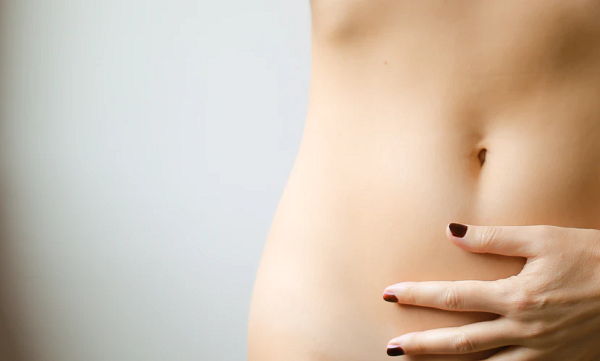Interstitial Cystitis, Multimodal Treatments, and How Pelvic Health Physical Therapy Helps IC
Interstitial cystitis (IC) also known as bladder pain syndrome or painful bladder syndrome, is a debilitating condition that significantly affects the quality of life of patients living with it.
The definition of IC from an international consensus is:
An unpleasant sensation (pain, pressure, discomfort) perceived to be related to the urinary bladder, associated with lower urinary tract symptoms of more than six weeks duration, in the absence of infection or other identifiable cause" (Hanno et al, 2009).
Interstitial cystitis affects 6-11% of women and 2–5% of men and increases with age from 1.7% under the age of 65 and up to 4.0% in women aged 80 years or older (Clemens et al., 2007 and Lifford et al., 2009). Patients that live with IC report that their quality of life is significantly impacted affecting their psychosocial, work-life, psychological well-being, personal relationships, and general health (Clemens et al., 2007). One important domain that is affected by IC is sexual function. Women with IC rated their sexual dysfunction as moderate to severe when compared to controls and reported increased pain with intercourse, decreased desire, and decreased frequency of orgasm (Peters et al., 2007 and Tincello et al., 2005).
What are the symptoms of IC?
- The Hallmark sign of IC is pain/pressure above the pubic bone or throughout the pelvis (urethra, vulva, vagina, rectum lower abdomen, and back), related to bladder filling (Tincello et al., 2005; Fitzgerald., 2005 and Warren et al., 2008).
- Another symptom of IC is increased pain with specific foods or drinks and/or worsened with bladder filling and/or improved with urination (Warren et al., 2008).
- Additionally, patients with IC commonly experience a sudden urge to urinate that can cause discomfort. This is called urinary urgency and happens in 84% of IC patients.
- An additional finding in patients with IC is the need to urinate frequently >10x/day. This is seen in 92% of patients diagnosed with IC (Tincello et al., 2005).
How Pelvic Health Physical Therapy Helps IC:
According to the American Urological Association, pelvic health physical therapy is the only treatment modality with an evidence grade of A.
Below we include details from several studies showing that pelvic health physical therapy helps IC patients. Manual therapy techniques were recommended on the pelvic, abdominal, and/or hips regions. Specific techniques used are:
- trigger point release
- lengthening of tight muscles
- lengthening of connective tissue restrictions
- scar tissue mobilizations
There have been several high quality studies showing the benefits of manual physical therapy to improve the symptoms of IC. One study by Fitzgerald et al., 2012 compared myofascial physical therapy to global therapeutic massage in patients with IC over a twelve week period. The results of the study found the myofascial physical therapy group had statistically significant improvements of 59%, as compared to 26% in the global therapeutic massage group. These results show a positive correlation that pelvic health physical therapy helps IC.
The American Urological Association recommends multimodal therapies to address all domains that IC can affect. Physical therapy, pain counseling, psychology, and stress management are recommended therapies to help manage symptoms. Studies show both that using these therapies together decreases the need for pain medications and that a focus on pelvic health physical therapy helps IC.
If you have some of the above symptoms make an appointment with a pelvic health therapist for an evaluation. Contact us here for an in-office visit, a telehealth session in California, or a virtual consultation worldwide.
** The American Urological Association has recently (2022) published updated guidelines to the treatment of IC and BPS. These updates are highlighted and discussed in our blog post: Updates to Interstitial Cystitis / Bladder Pain Syndrome Treatment Guidelines. **
References
- Hanno P and Dmochowski R: Status of international consensus on interstitial cystitis/ bladder pain syndrome/painful bladder syndrome: 2008 snapshot. Neurourology and Urodynamics 2009; 28: 274.
- Clemens JQ, Link CL, Eggers PW et al: Prevalence of painful bladder symptoms and effect on quality of life in black, Hispanic and white men and women. J Urol 2007; 177:
- Lifford KL and Curhan GC: Prevalence of Painful Bladder Syndrome in Older Women. Urology
2009; 73: 494 - Peters KM, Killinger KA, Carrico DJ et al: Sexual function and sexual distress in women with
interstitial cystitis: a case- control study. Urology 2007; 70: 543. - Tincello DG and Walker AC: Interstitial cystitis in the UK: results of a questionnaire survey of
members of the Interstitial Cystitis Support Group. Eur J Obstet Gynecol Reprod Biol 2005;
118: 91. - Fitzgerald MP, Koch D and Senka J: Visceral and cutaneous sensory testing in patients with painful bladder syndrome. Neurourol Urodyn 2005; 24: 627.
- Fitzgerald, MP et al: Randomized multicenter clinical trial of myofascial physical therapy in
women with interstitial cystitis/painful bladder syndrome (IC/PBS) and pelvic floor tenderness. J
Urol 2012; 187: 2113 - Warren JW, Brown J, Tracy JK et al: Evidence Based criteria for pain of interstitial cystitis/painful
bladder syndrome in women. Urology 2008; 71: 444










